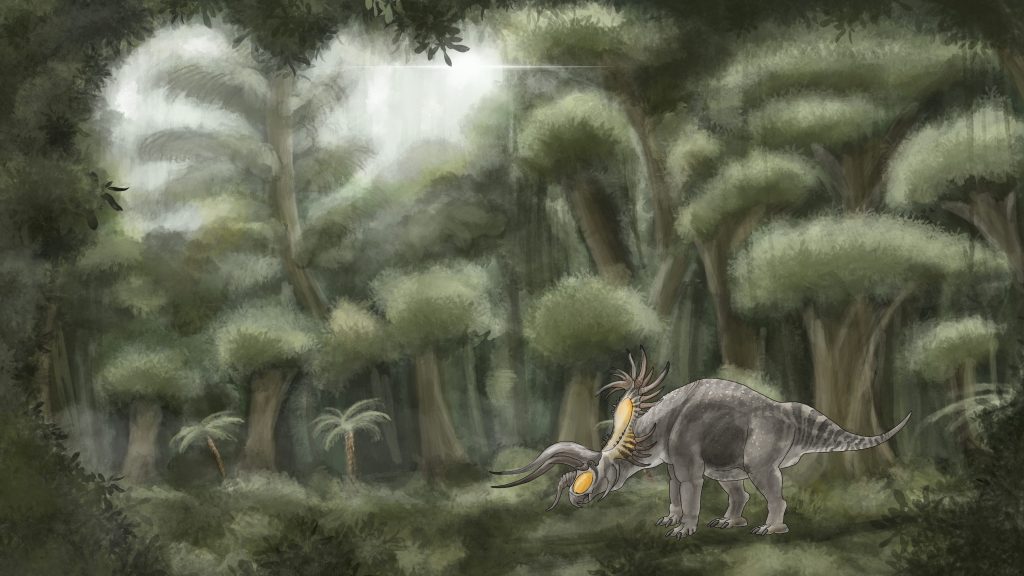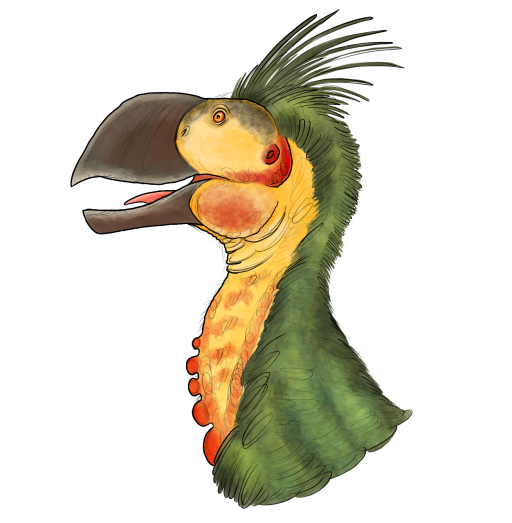
A large indricosaurine ceratopsian browses through a clearing in the forest.
Subterramundus is dominated by lush forests, jungles and wetlands supporting a variety of megafauna and mesofauna. But for all this life to flourish, other factors need to come into play.
The gas that replaces the sun is fundamental to the existence of all plants in Subterramundus. And without plants Subterramundus would be uninhabited save for insects and maybe a few small reptiles. As the gas circulates around the insides of the planet, tons of water are vaporized every day. At night, the clouds are able to drop their load, resulting in nightly storms. These rainstorms cause most predators to seek shelter rather than attempt to hunt. A few hunters with exceptional hearing still prowl the loud wet nights in search of anything not tucked away in a shelter.
The highly variable land of Subterramundus supports an array of vibrant ecosystems. Pillars and spires of stone provide are safe havens and nurseries for small or flying animals such as birds, young pterosaurs or various squamates. Cliffs and crags provide shade and shelter from predators and the torrential rains that pour down every night. Deeper caverns lead to less crowded spaces where smaller carnivores can thrive without fear of competition.
Vast open spaces and forest clearings are usually the prime neting and mating grounds for large herbivores such as sauropods, ceratopsians and the giant thescelosaurs that replace hadrosaurs. Here, giants come to battle and procreate. Predators use the surrounding vegetation to snatch unattended young or wounded adults.
Despite the many dangers, Subterramundus is a vibrant place full of life. For some animals it is a paradise. For others, it is a deathtrap. But for all, it is home, and has been for millions of years.

